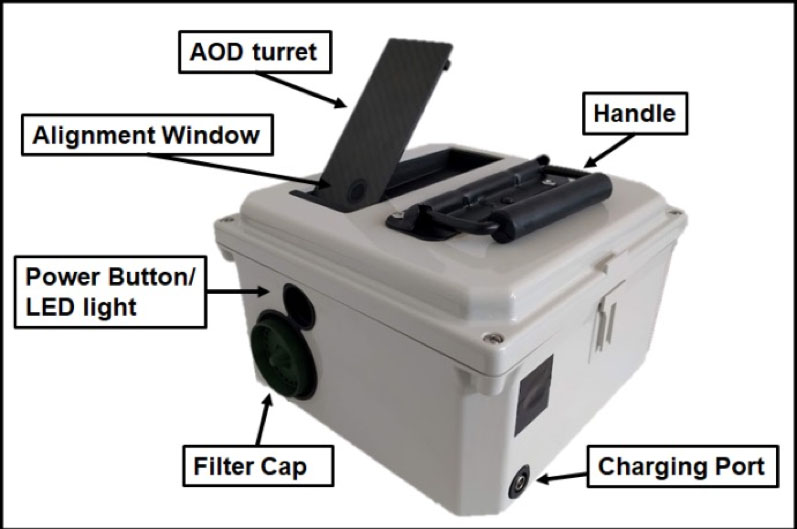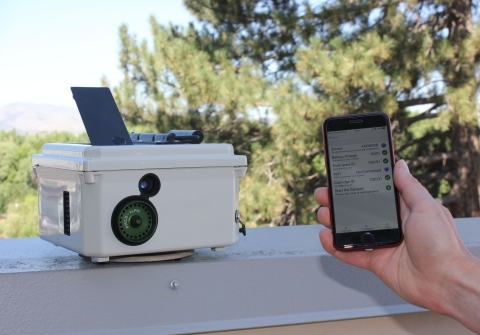John Volckens, Colorado State University
Aerosols are liquid or solid particles that are suspended in air. They include smoke, dust, pollen, bacteria, salt, water, and pollutants. Most come from natural sources such as sea spray, volcanic eruptions, wildfires, and desert dust. Some come from human activity, including transportation, industry, and agriculture. These particles affect air quality and human health. The World Health Organization (WHO) estimates that each year, more than seven million people die from long-term exposure to polluted air.
Citizen-Enabled Aerosol Measurements for Satellites (CEAMS) is led by faculty, researchers, and students at Colorado State University in Fort Collins. The goal of CEAMS is to improve our understanding of how aerosols affect local air quality. Citizen scientists take backyard air quality measurements using an instrument called the Aerosol Mass and Optical Depth (AMOD) sampler. The AMOD measures sunlight intensity at four different wavelengths (440, 5020, 675, and 870 nm) and fine particle pollutant concentrations, allowing scientists to estimate air quality, visibility, and other properties of fine particle air pollution.
CEAMS uses these measurements to understand regional air quality and how it changes in time and space. The data collected by CEAMS will help scientists better understand how NASA satellites observe local air quality and increase our understanding of air quality and its impact on health around the world.
Update October 2019
CEAMS successfully built the AMODv2 (Aerosol and Optical Depth instrument version 2) device, an update on the instrument that was built and used to measure light intensity in the pilot/prototype stage (Wendt et al., 2019). The version 2 device has a solar-tracking AOD turret which allows the instruments to take multiple measurements each day. Added Wi-Fi allows the device to transfer data automatically. Lastly, the larger battery expands runtime from two days to five days.
CEAMS was also able to improve participant resources by updating the manual and creating new training videos included on the new website. The new website allows participants to view their measurements in near real-time.
Presentations and Publications
Good, N. (2019, March). Citizen-Enabled Aerosol Measurements for Satellites. Presented at NASA’s Earth Science Data System Working Groups (ESDSWG) Annual Meeting, Annapolis, MD.
Ford, B. (2019, February). Population Exposure Assessment for Wildfire Smoke. Presented at the British Columbia Lung Association 16th Annual Air Quality and Health Workshop, Vancouver, BC.
Volckens, J. (2019, May). New Personal Monitors & Citizen Science. Presented to the Colorado Department of Public Health and Environment Air Quality Control Commission, Aurora, CO.
Ford, B., et al. (2019). A low-cost monitor for measurement of fine particulate matter and aerosol optical depth – Part 2: Citizen science pilot campaign in northern Colorado. Atmospheric Measurement Technique (accepted, in press). doi:10.5194/amt-2019-109
Quinn, C., et al. (2019, November). Mobilizing the Low-Cost Sensor Revolution with Smartphones and Citizen Science. EM Magazine.
Visit the CEAMS site for more information.
Read more about NASA's Citizen Science for Earth Systems Program (CSESP).
